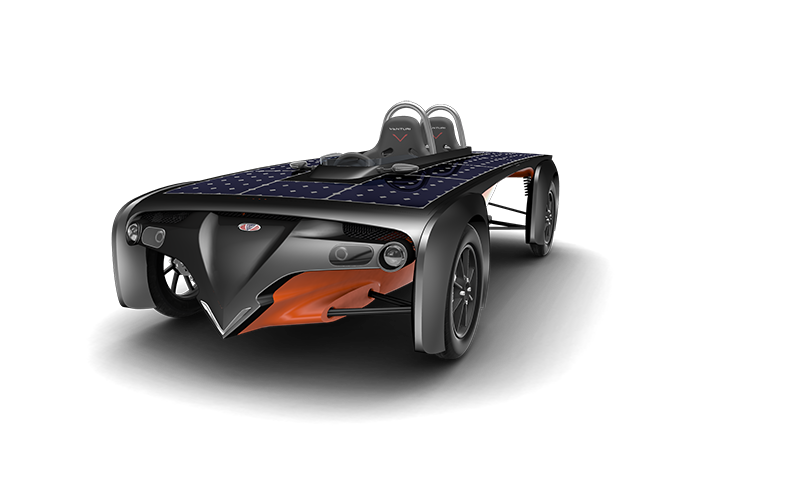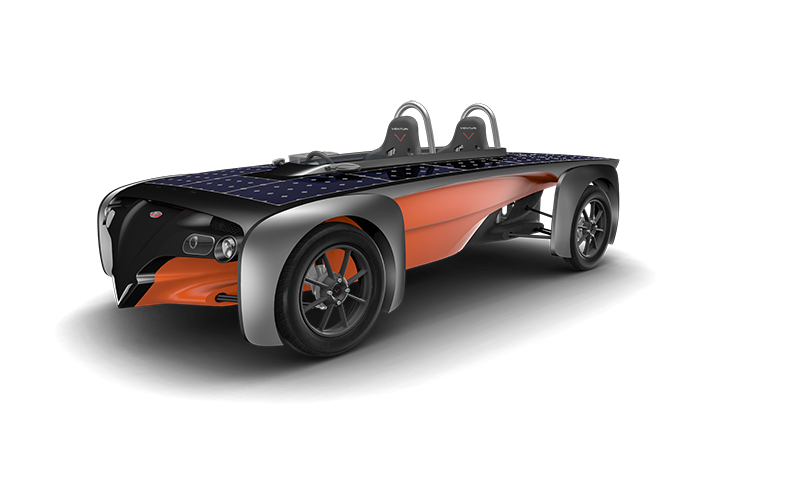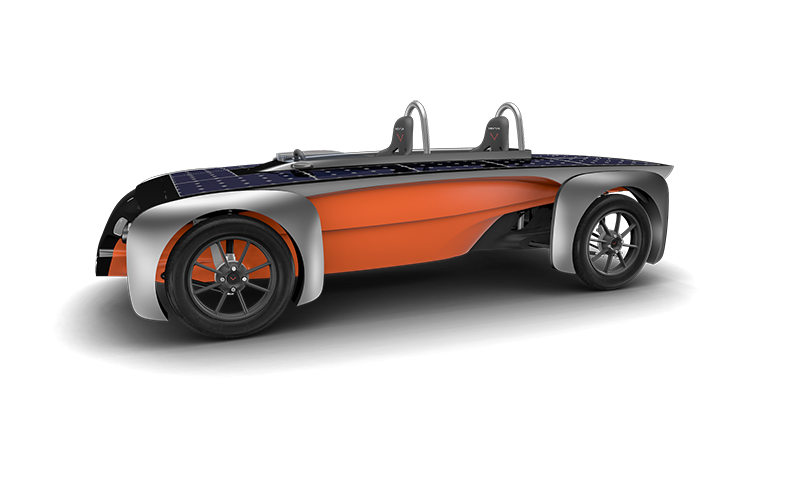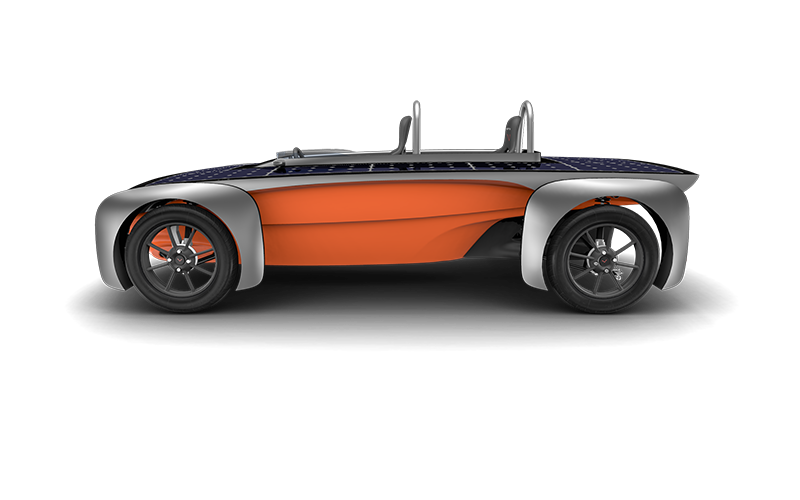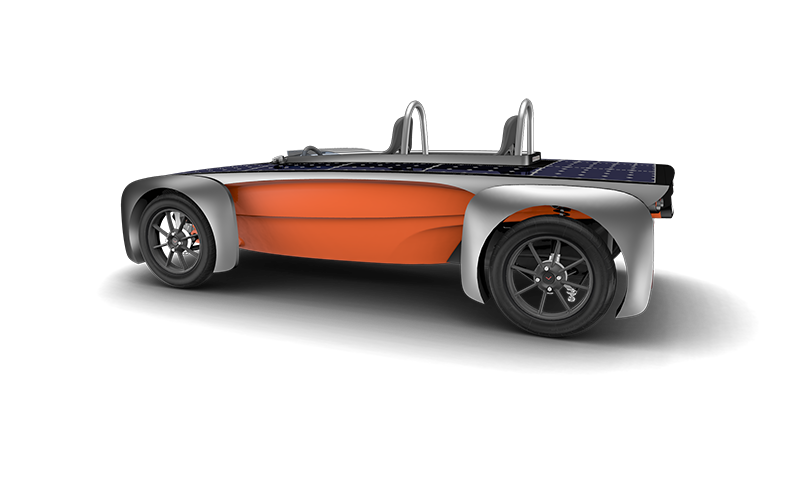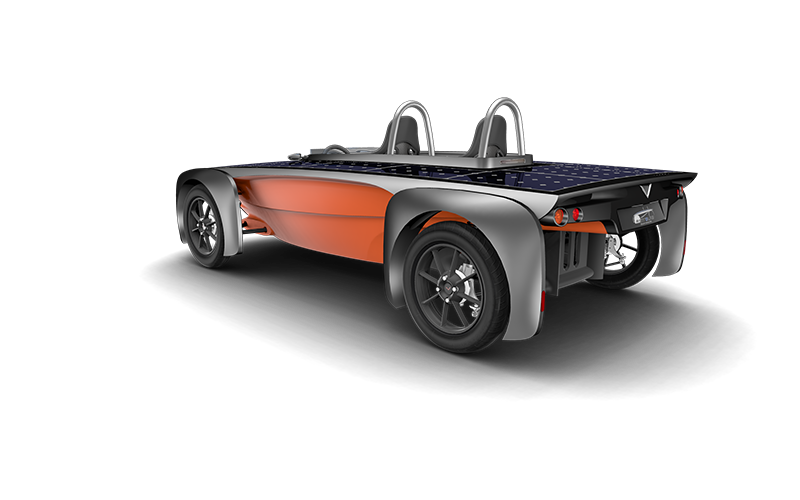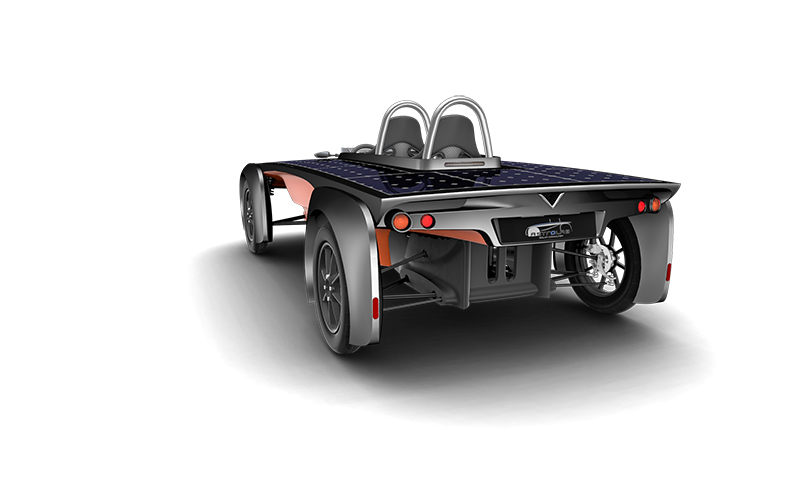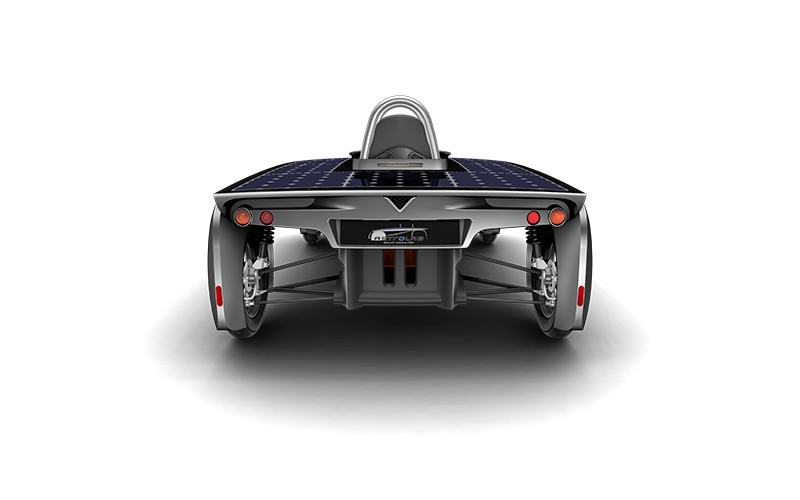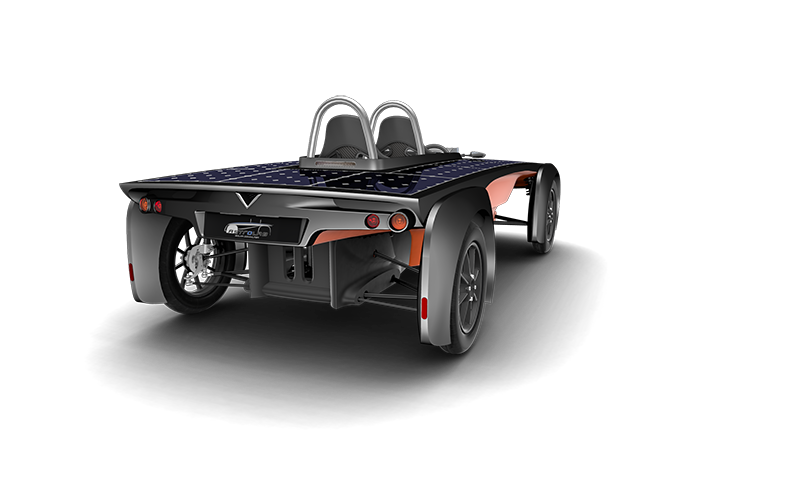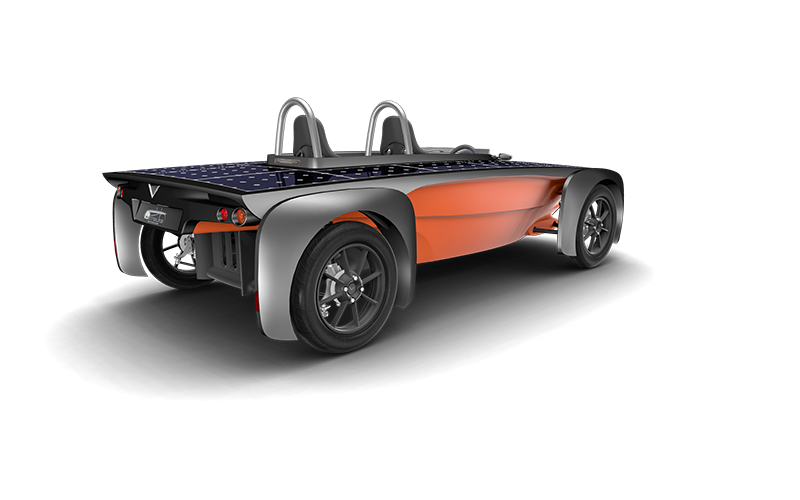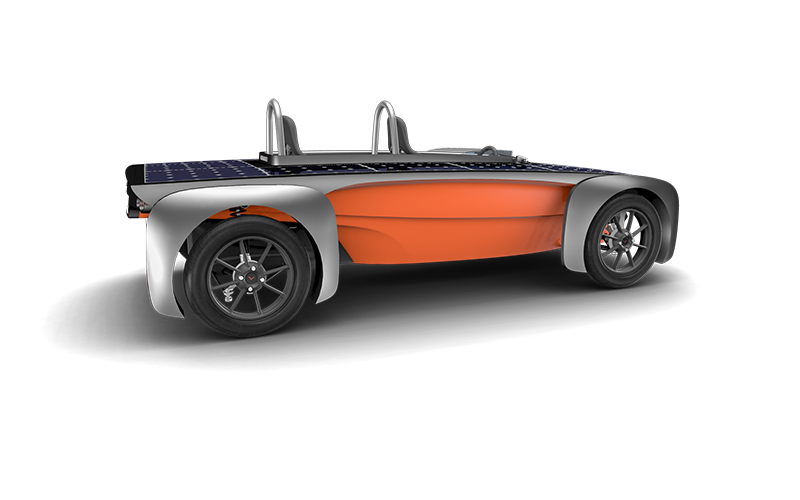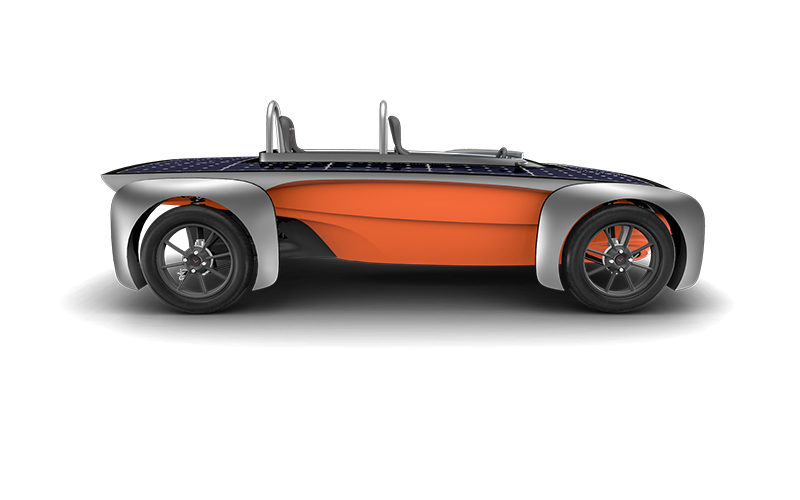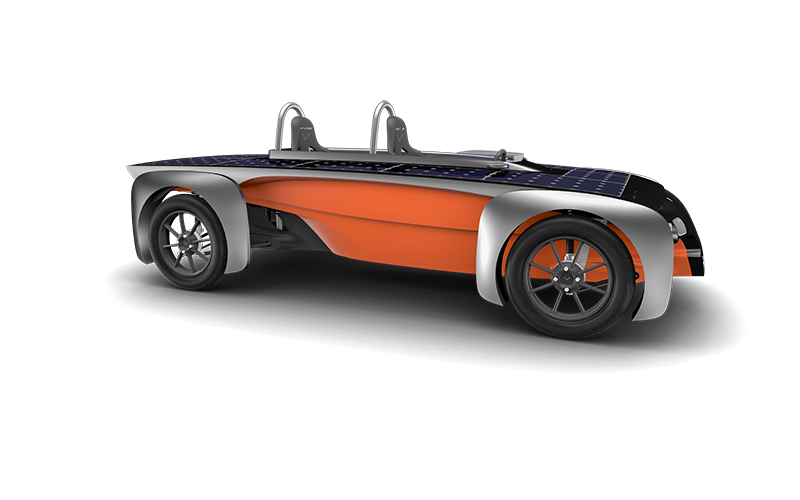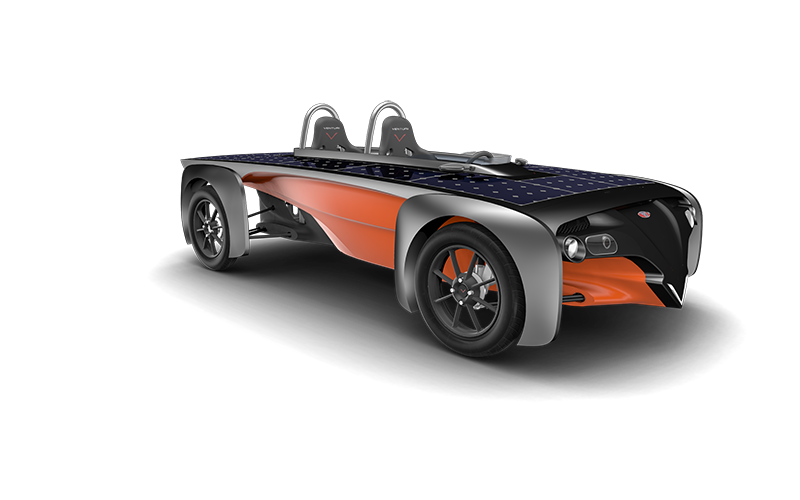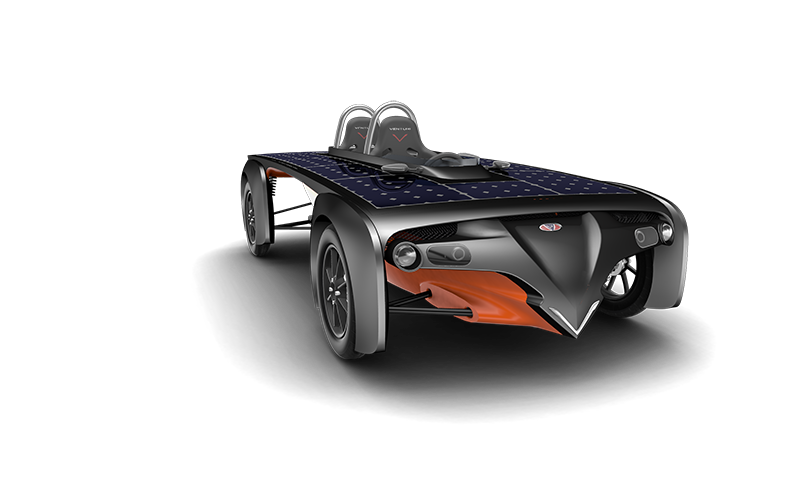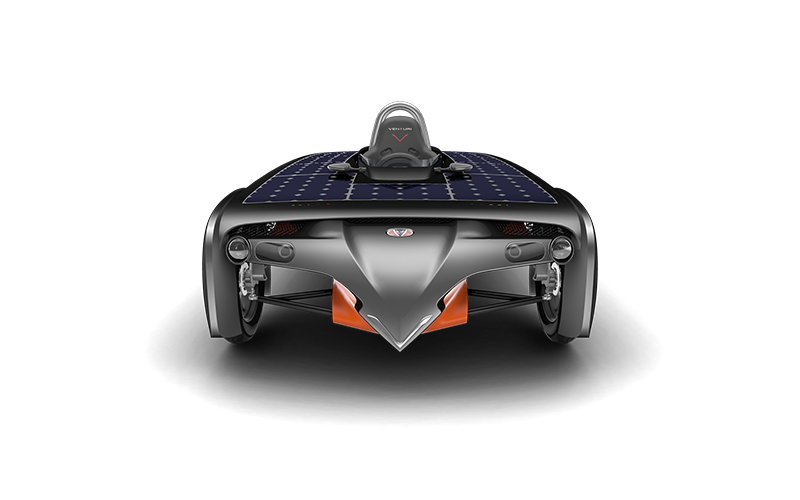

Capable of driving with very little energy and recharging using solar energy even while on the move, Astrolab is the first high-performance electric-solar hybrid vehicle. Unveiled at the 2006 Paris Motor Show, this unique concept zero-emissions vehicle does not need constant sunlight exposure to keep moving. It is able to draw on a reserve of stored energy, whether from the sun or the power network.
Its designer, Sacha Lakic, describes Astrolab as “a flying wing on four wheels”. Though compact at under 4 metres in length, the lightweight and profiled body carries 3.6 m² of photovoltaic cells. The vehicle is optimised for the solar cells, taking into account the impact of the passengers’ weight on its dynamics and handling. The tandem design ensures that Astrolab is perfectly balanced at all times, whether carrying one or two people.
Astrolab was the result of Venturi’s desire to use solar tech for energy conversion. The vehicle is designed to achieve a high level of performance with very little energy. For example, the ultra-lightweight monocoque chassis is made from carbon, and also provides protection for the occupants.
Electric-solar two-seater tandem vehicle
Rear-wheel drive
7 kWh battery pack
Solar panels: 3.6 m² of photovoltaic cells
Max. torque: 50 Nm
Top speed: 120 km/h
Range under battery power: 110 km
Weight: 280 kg (empty)
